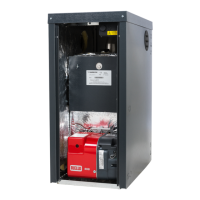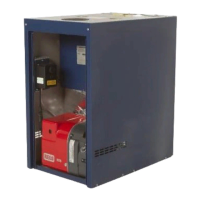Page 26
BS 7074-1: Application, selection and installation of expansion vessels and
ancillary equipment for sealed water systems. Code of practice for domestic
heating and hot water supply
The heating system should be installed by a competent installer in accordance
with the recommendations laid down by the building services compliance guide,
OFTEC and sound engineering practice.
In order to comply with building regulations, the boiler passport and/or
OFTEC forms CD10 for installations and CD11 for commissioning should be
left with the customer. Alternatively the installation can be inspected and
approved by a building control officer.
4.3 Combination Boiler General Requirements
The boiler will have a DHW priority when both domestic hot water (DHW) and
central heating (CH) are selected. So if DHW flow is detected or the heat store
has not been satisfied the entire output of the boiler is directed to DHW before the
boiler will switch over to CH. When fully cold it can take approximately 15 minutes
for the heat store to be satisfied, depending on appliance output.
After a draw-off of 120L at 24L/min, with an average temperature rise of 32ºC, the
thermal store has a recovery time of approximately 5 minutes depending on
appliance output.
Note: If DHW has not been selected no hot water can be produced even if the
heat store is up to temperature.
4.3.1 Pump Overrun
Where there is a build-up of excess heat in the boiler primary heat exchanger with
domestic hot water mode selected, the pump overrun function will operate. This
function is controlled by the CH Flow NTC sensor.
The excess heat will then be pumped into the heat store. Once the temperature
has fallen in the boiler and the pump overrun function is satisfied, then the
circulating water pump will stop.
There are also timed pump overrun functions, these are controlled by P01 & P02
in the Engineer Parameters.

